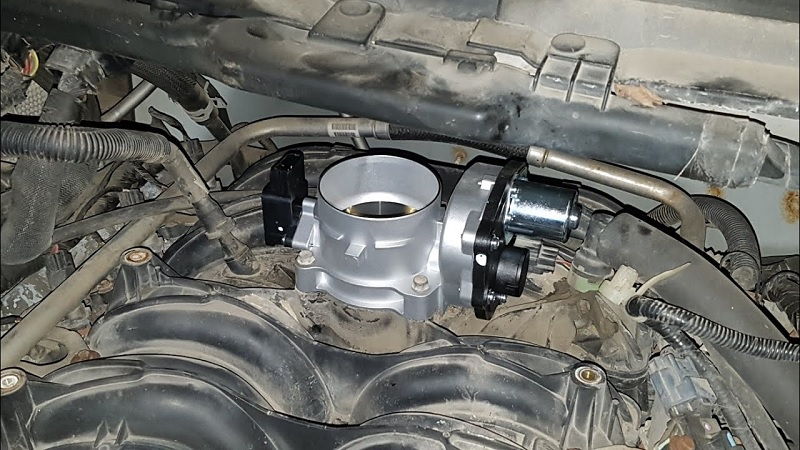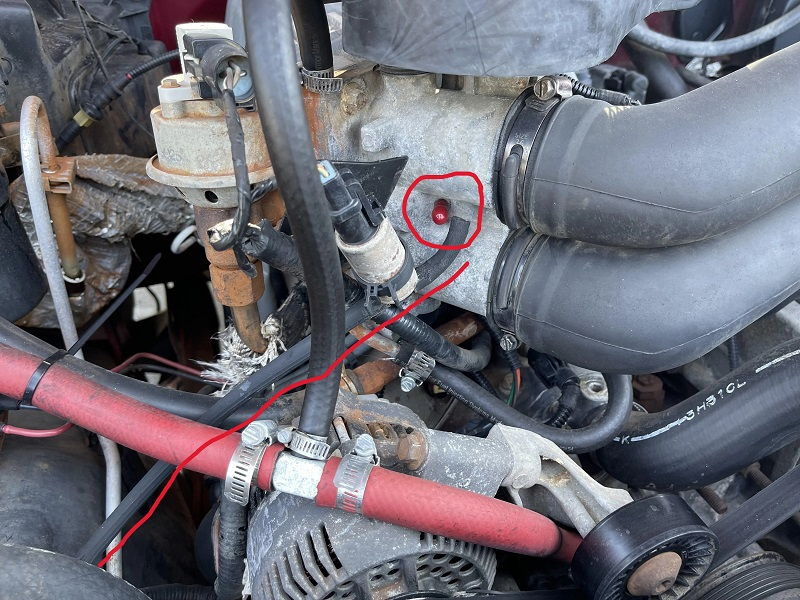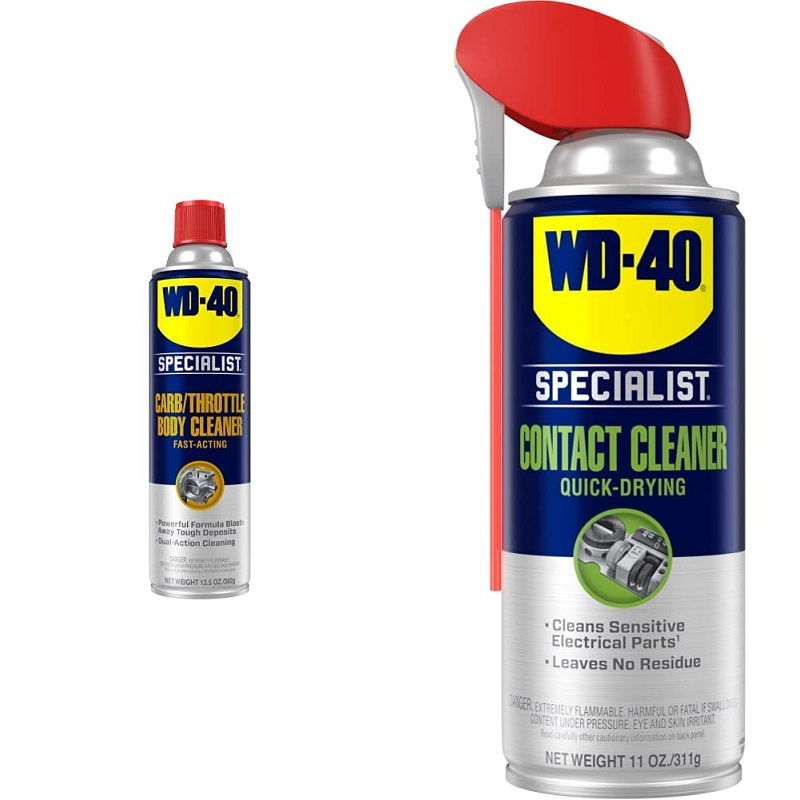This post contains affiliate links. This means I will make a commission at no extra cost to you should you click through and make a purchase [ “As an Amazon Associate, I earn from qualifying purchases.” ]. Read the full disclosure here.
Ford F150 Throttle Body GuideMechanic.Com When it comes to optimizing the performance of your Ford F150 truck, one crucial component that often goes unnoticed is the throttle body.
This powerful yet understated device plays a vital role in regulating the airflow into the engine, directly influencing your vehicle’s power, fuel efficiency, and overall driving experience.
In this comprehensive guide, we will delve into the intricacies of the Ford F150 throttle body, exploring its function, maintenance tips, and potential upgrades that can take your truck’s performance to the next level.
Ford F150 Throttle Body: Understanding the Throttle Body
Introduction

The throttle body is a critical component of the engine’s air intake system, responsible for controlling the amount of air that enters the engine.
See Also: Ford Fusion Purge Valve
It consists of several parts, including the throttle plate, throttle position sensor (TPS), and idle air control valve (IAC). Understanding how these components work together is essential in comprehending the overall function of the throttle body.
Throttle Plate
The throttle plate, also known as the butterfly valve, is a circular metal plate positioned within the throttle body. It rotates to control the airflow entering the engine.
When the accelerator pedal is pressed, the throttle plate opens, allowing more air to enter, which results in increased engine power.
Throttle Position Sensor (TPS)
The throttle position sensor (TPS) is an electronic sensor located on the throttle body. It monitors the position of the throttle plate and sends signals to the engine control unit (ECU) to adjust fuel injection and ignition timing accordingly. It ensures that the engine receives the correct air-fuel mixture for optimal performance.
Idle Air Control Valve (IAC)
The idle air control valve (IAC) regulates the engine’s idle speed by controlling the amount of air bypassing the closed throttle plate.
It opens slightly to maintain a steady idle speed when the throttle plate is closed, ensuring smooth operation and preventing stalling.
Understanding these key components of the throttle body provides a foundation for comprehending its function within the larger context of the engine’s air intake system.
Ford F150 Throttle Body: Signs of a Faulty Throttle Body
Introduction

Recognizing the warning signs of a faulty throttle body is crucial to prevent potential performance issues and costly repairs. Here are some common indicators that your Ford F150’s throttle body may be malfunctioning:
Rough Idling
If your truck’s engine idles roughly or inconsistently, it could be a sign of a faulty throttle body. A malfunctioning throttle body may not maintain the correct airflow at idle, leading to a shaky or unstable engine idle.
Poor Acceleration
A faulty throttle body can disrupt the airflow into the engine, resulting in sluggish acceleration. If you notice a significant delay in your truck’s response when you step on the accelerator pedal, it may be time to inspect the throttle body.
Reduced Fuel Efficiency
A malfunctioning throttle body can lead to an improper air-fuel mixture, causing reduced fuel efficiency. If you find yourself visiting the gas station more frequently despite driving under normal conditions, it could be a result of a faulty throttle body.
See Also: 2013 Ford Focus TCM
Check Engine Light
In some cases, a malfunctioning throttle body can trigger the check engine light on your dashboard. This warning light is often accompanied by diagnostic trouble codes (DTCs) related to the throttle body, providing further insight into the specific issue.
Unresponsive Accelerator Pedal
If you experience a lack of response or delayed reaction when pressing the accelerator pedal, it could indicate a problem with the throttle body. This issue can be particularly concerning when attempting to merge onto highways or make quick maneuvers.
Inconsistent Engine Performance
A faulty throttle body can disrupt the engine’s airflow, leading to inconsistent engine performance. You may notice fluctuations in power delivery, unexpected surges or drops in RPM, or a generally unstable driving experience.
Stalling or Difficulty Starting
In severe cases, a malfunctioning throttle body can cause stalling or difficulty starting the engine. If you experience these issues, it is crucial to address the throttle body problem promptly to avoid further complications.
Keep in mind that these symptoms may also indicate other underlying issues, so it is essential to consult with a professional mechanic or perform a thorough diagnostic before concluding that the throttle body is to blame.
Ford F150 Throttle Body: Throttle Body Cleaning and Maintenance
Introduction

Maintaining a clean and well-functioning throttle body is crucial for optimal engine performance. Over time, carbon deposits, oil residue, and dirt can accumulate on the throttle body, hindering its smooth operation. Regular cleaning and maintenance can help prevent performance issues and extend the throttle body’s lifespan.
Gather the Necessary Tools
Before starting the cleaning process, gather the following tools:
- Screwdriver or socket set
- Throttle body cleaner
- Rag or shop towels
- Soft-bristle brush or toothbrush
Disconnect the Battery
Prior to cleaning the throttle body, it is essential to disconnect the negative terminal of the battery. This step ensures safety and prevents any electrical mishaps during the cleaning process.
Locate the Throttle Body
The throttle body is typically located between the air intake duct and the intake manifold. Refer to your vehicle’s manual if you are unsure of its exact location. Once located, remove any components obstructing access to the throttle body, such as the air intake duct or engine cover.
Inspect for Carbon Buildup
Before cleaning, visually inspect the throttle body for carbon buildup and dirt. Pay close attention to the throttle plate and its surrounding areas. Excessive carbon buildup may require additional cleaning or a more thorough approach.
Clean the Throttle Plate
Use the throttle body cleaner and a soft-bristle brush or toothbrush to clean the throttle plate and its housing. Spray the cleaner directly onto the throttle plate and use the brush to remove any carbon deposits or grime. Be gentle to avoid damaging the delicate throttle plate.
Clean the Throttle Body Housing
After cleaning the throttle plate, spray the throttle body cleaner inside the housing and use the brush to clean the walls thoroughly. Pay attention to the areas surrounding the throttle plate, as they tend to accumulate carbon and residue.
Wipe the Throttle Body
Once the cleaning process is complete, use a rag or shop towel to wipe away any excess cleaner and debris from the throttle body. Ensure that the throttle plate and housing are completely dry before reassembling.
Reassemble and Reconnect
Reinstall any components that were removed and reconnect the negative terminal of the battery. Double-check all connections and ensure everything is securely in place.
Regular Maintenance
Performing regular maintenance on your Ford F150’s throttle body is crucial for optimal performance. Inspect the throttle body periodically for any signs of dirt or carbon buildup and clean as necessary. Additionally, follow your vehicle’s manufacturer-recommended maintenance schedule for further guidance on throttle body maintenance.
Ford F150 Throttle Body: Upgrading Your Throttle Body
Introduction

If you’re looking to enhance your Ford F150’s performance, upgrading the throttle body can be a worthwhile investment.
An upgraded throttle body can improve airflow, increase throttle response, and potentially boost horsepower. However, before diving into the world of aftermarket throttle bodies, it’s important to consider a few key factors.
Determine Your Performance Goals
Before choosing an upgraded throttle body, consider your specific performance goals. Are you looking for increased power, improved fuel efficiency, or both? Understanding your objectives will help you select the right throttle body that aligns with your desired outcomes.
Research Available Options
The market offers a wide range of aftermarket throttle bodies for the Ford F150. Research and compare different brands, models, and customer reviews to gain insights into their performance, durability, and compatibility with your truck.
Consider Compatibility
Ensure that the upgraded throttle body you choose is compatible with your Ford F150’s make, model, and engine specifications. Throttle bodies are designed to fit specific vehicles, so verify compatibility before making a purchase.
Understand Installation Requirements
Upgrading the throttle body usually requires some level of mechanical skill and knowledge. Consider whether you are comfortable performing the installation yourself or if you would prefer to have it done by a professional mechanic. Additionally, check if any modifications or tuning adjustments are necessary after the installation.
Consult with Experts
If you have any doubts or questions regarding throttle body upgrades, consider consulting with experts or experienced enthusiasts. They can provide valuable insights and recommendations based on their knowledge and firsthand experiences.
Installation Process
Once you have selected the appropriate aftermarket throttle body, follow the manufacturer’s installation instructions carefully. Ensure that all connections are secure andall components are properly aligned. Take your time during the installation process to ensure a seamless fit and avoid any potential issues down the line.
Modifications and Tuning
After installing an upgraded throttle body, it is essential to consider the potential need for modifications and tuning. Upgrading the throttle body can affect the air-fuel mixture and engine performance, so it may be necessary to recalibrate the engine control unit (ECU) or make other adjustments to optimize the new throttle body’s potential.
Consult with a Professional
If you are unsure about the tuning and calibration process or lack the necessary tools and expertise, it is advisable to seek assistance from a professional tuner or mechanic. They can ensure that your Ford F150’s engine is properly tuned to take full advantage of the upgraded throttle body’s capabilities.
Ford F150 Throttle Body: Tuning and Calibration
Introduction
After installing an upgraded throttle body, tuning and calibration become essential to fully optimize its potential. Tuning involves making adjustments to the engine control unit (ECU) to ensure that it receives the correct signals and makes the necessary changes in response to the upgraded throttle body’s increased airflow.
The Role of Engine Control Units (ECUs)
Engine control units (ECUs) are responsible for monitoring various sensors within the vehicle and making adjustments to optimize engine performance. When upgrading the throttle body, the ECU needs to be recalibrated to account for the increased airflow and potential changes in the air-fuel mixture.
Importance of Proper Adjustments
Proper adjustments are crucial to fully harness the benefits of an upgraded throttle body. Failure to calibrate the ECU correctly can result in suboptimal performance, reduced efficiency, or even potential damage to the engine. It is essential to follow the manufacturer’s instructions or consult with a professional tuner to ensure the correct tuning and calibration process.
Professional Tuning vs. DIY Tuning
Tuning and calibration can be a complex process, requiring specialized knowledge and equipment. While some enthusiasts may prefer to tune their vehicles themselves, it is often advisable to seek the expertise of a professional tuner or mechanic. They have the experience and tools necessary to accurately calibrate the ECU and maximize the performance benefits of the upgraded throttle body.
Ford F150 Throttle Body: Frequently Asked Questions
Introduction
Here are answers to some commonly asked questions related to Ford F150 throttle bodies:
Are aftermarket throttle bodies compatible with all Ford F150 models?
Aftermarket throttle bodies are designed to fit specific Ford F150 models and engine configurations. It is essential to verify compatibility with your specific vehicle before making a purchase.
Will upgrading the throttle body void my vehicle’s warranty?
Modifying your vehicle, including upgrading the throttle body, can potentially void certain aspects of your warranty. It is recommended to review your vehicle’s warranty terms and consult with the manufacturer or a dealership to understand any potential implications.
Can I install an aftermarket throttle body myself?
The installation process for an aftermarket throttle body can vary depending on the specific model and your mechanical skill level. While some enthusiasts may feel comfortable performing the installation themselves, others may prefer to have it done by a professional mechanic to ensure proper fitment and avoid any potential issues.
What are the potential benefits of upgrading the throttle body?
Upgrading the throttle body can lead to improved airflow, increased throttle response, and potentially increased horsepower. Depending on the specific throttle body and your vehicle’s configuration, you may also experience enhanced fuel efficiency and smoother engine operation.
Do I need to tune my vehicle after installing an upgraded throttle body?
In most cases, tuning and calibration are highly recommended after installing an upgraded throttle body. The changes in airflow and air-fuel mixture may necessitate adjustments to the engine control unit (ECU) to optimize performance and ensure proper functionality.
Ford F150 Throttle Body: Expert Insights and Recommendations
Introduction
Here are some expert insights and recommendations to help you make informed decisions regarding Ford F150 throttle bodies:
Brand Recommendations
Experts may have specific brand recommendations based on their experiences and knowledge of different throttle body manufacturers. They can provide insights into the reliability, performance, and compatibility of various brands, helping you make an informed choice.
Performance Enhancement Tips
Enthusiasts and experts can offer valuable tips on maximizing the performance benefits of an upgraded throttle body. They may suggest complementary modifications, tuning techniques, or driving habits that can further enhance your Ford F150’s overall performance.
Real-Life Experiences
Experts and enthusiasts often share their real-life experiences with different throttle bodies. They can provide detailed accounts of their installation process, performance gains, and any challenges they encountered along the way. These firsthand accounts can offer valuable insights and help you understand what to expect when upgrading your own throttle body.
Ford F150 Throttle Body: Troubleshooting Common Throttle Body Issues
Introduction
Despite proper maintenance and care, issues with the throttle body may still arise. Here are some common problems encountered with Ford F150 throttle bodies and potential troubleshooting steps:
Sticky Throttle Plate
If the throttle plate becomes sticky or does not fully close, it can affect engine performance. Cleaning the throttle body, particularly the throttle plate and its housing, can often resolve this issue. Ensure that the throttle plate moves freely after cleaning and that there is no excess buildup or debris.
Throttle Body Sensor Malfunction
If the throttle position sensor (TPS) or other throttle body sensors malfunction, it can lead to poor performance and drivability issues. In such cases, it may be necessary to replace the faulty sensor or have it repaired by a professional mechanic.
Electrical Connection Problems
Improper or loose electrical connections can cause intermittent issues with the throttle body. Ensure that all electrical connections related to the throttle body are secure and free from corrosion. If necessary, clean the connections and apply dielectric grease to maintain a reliable electrical connection.
Vacuum Leaks
Vacuum leaks can disrupt the throttle body’s operation and lead to performance issues. Inspect the vacuum lines and connections for any signs of damage, cracks, or leaks. Replace or repair any faulty components to restore proper vacuum pressure.
Software or Calibration Issues
If you have recently performed a software update or modified the ECU calibration, it is possible that compatibility issues or incorrect settings are affecting the throttle body’s performance. Consult with a professional tuner or mechanic to ensure that the software or calibration is properly configured for your specific throttle body and vehicle.
Ford F150 Throttle Body: The Future of Throttle Body Technology
Introduction
As technology continues to evolve, so does throttle body technology. Here are some advancements on the horizon that may shape the future of Ford F150 throttle bodies:
Electronic Throttle Bodies
Electronic throttle bodies replace the traditional mechanical linkage with an electronic system that controls the throttle plate. This technology offers greater precision and responsiveness, potentially allowing for more advanced engine control strategies.
Drive-by-Wire Systems
Drive-by-wire systems eliminate the need for a physical connection between the accelerator pedal and the throttle body. Instead, electronic sensors and actuators directly control the throttle plate. This technology opens up possibilities for advanced driver assistance features and integration with other vehicle systems.
Improved Integration with ECUs
Advancements in throttle body technology may lead to improved integration with engine control units (ECUs). Enhanced communication and data exchange between the throttle body and ECU can result in more precise control over the engine’s performance, efficiency, and emissions.
Efficiency Enhancements
Future throttle body designs may focus on further improving efficiency by minimizing airflow restrictions and optimizing air distribution. This could result in better fuel economy, reduced emissions, and increased overall performance.
Enhanced Diagnostic Capabilities
Throttle body technology may incorporate advanced diagnostic capabilities, allowing for more accurate and timely detection of issues or malfunctions. This can streamline troubleshooting and simplify maintenance, ultimately enhancing the ownership experience for Ford F150 owners.
Conclusion
Introduction
The throttle body plays a crucial role in the performance of your Ford F150 truck. Understanding its function, maintaining it properly, and considering upgrades can significantly enhance your vehicle’s power, fuel efficiency, and overall driving experience.
Whether you choose to clean, upgrade, or troubleshoot your throttle body, remember to consult with experts, follow manufacturer instructions, and prioritize regular maintenance to optimize your Ford F150’s throttle body and unlock its full potential.
- Seafoam Catalytic Converter Cleaner: It Work & How to Use It? - April 18, 2025
- Rislone Catalytic Converter Cleaner: What It Is, How It Works - April 18, 2025
- Wynn’s Catalytic Converter Cleaner 325ml - April 17, 2025
